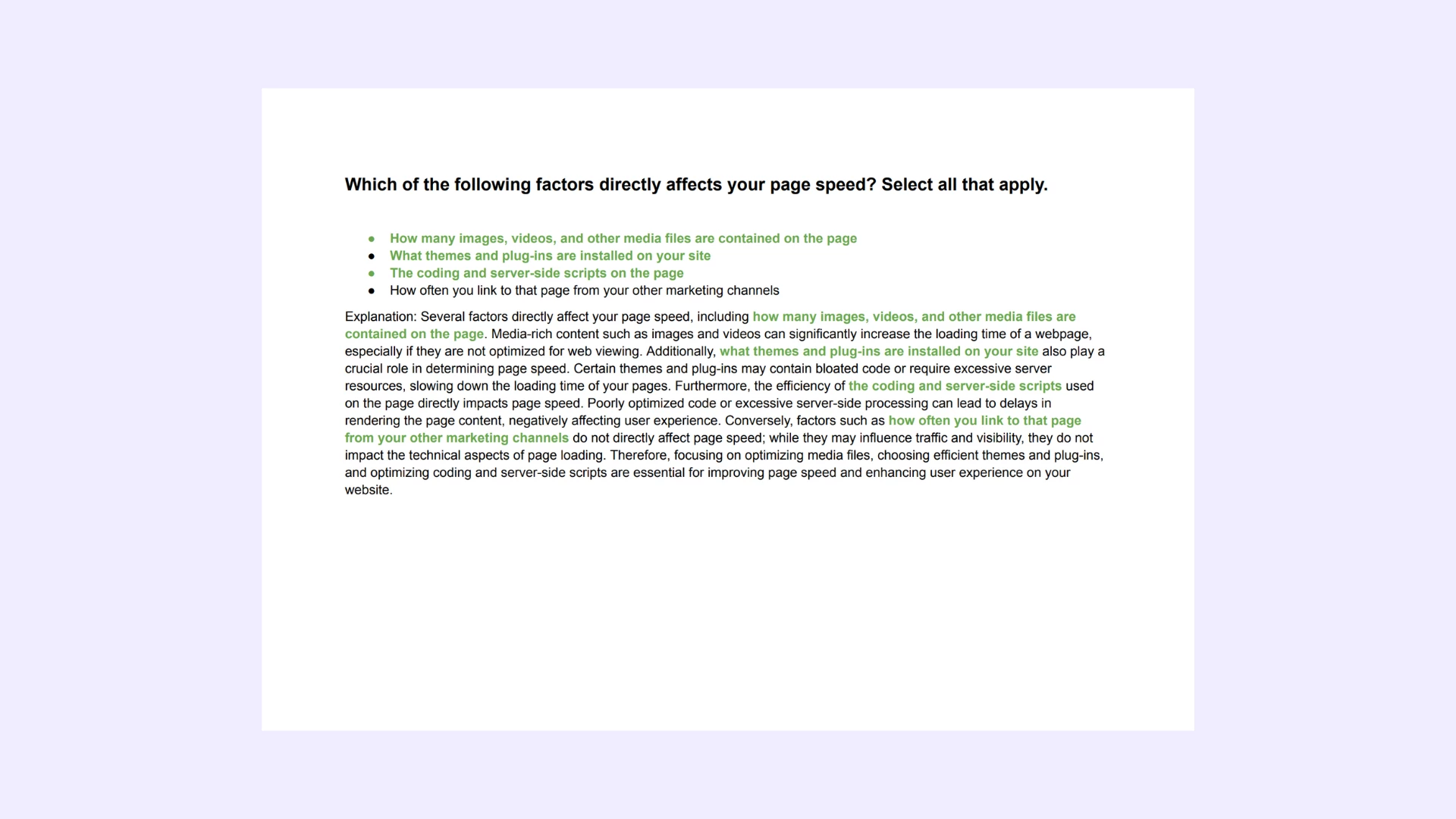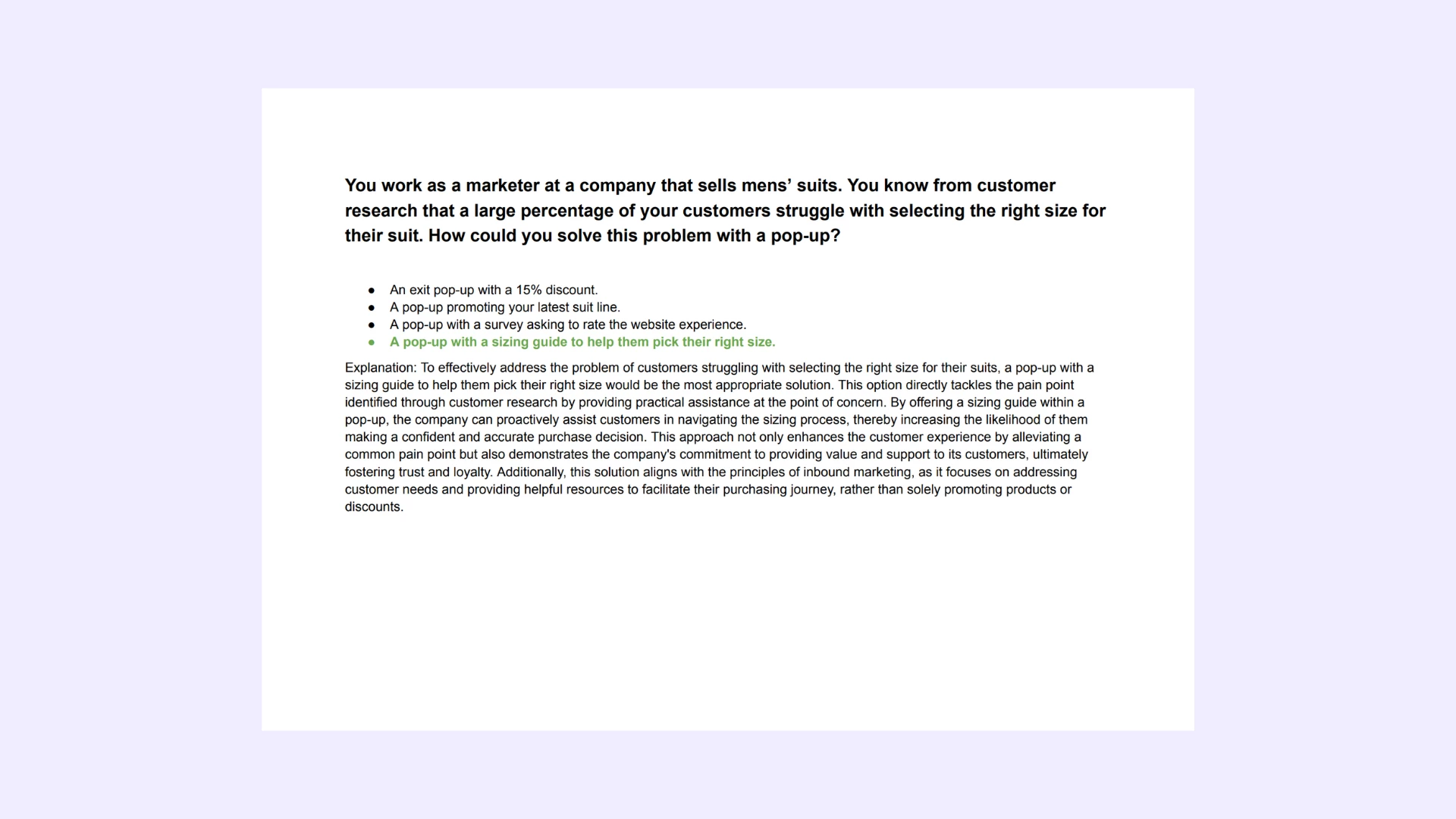Fill in the blank; In the concept, fire bullets, then cannonballs, bullets represent ————, while cannonball represent ————.
unproven ideas; proven hits.
proven hits; unproven ideas.
small, proven ideas; huge, well-resourced hits.
huge, well-resourced ideas; small, proven ideas.

HubSpot Roll. Includes Answers for Every Real HubSpot Certification Exam.
All-in-One: Get all HubSpot exams answers with explanations in one bundle. This package includes answers for every current HubSpot certification. Regular updates to reflect the latest exam version. -> See what's included.


Need a single cerification exam answers? Check out our -> list of certification exams answer keys. Learn Smarter. Obtain or Renew your certificates with peace of mind!
Explanation: Fill in the blank; In the concept, “fire bullets, then cannonballs,” bullets represent ————, while cannonball represent ————.
Explanation: The correct answer is **small, proven ideas; huge, well-resourced hits**. In the concept of "fire bullets, then cannonballs," bullets represent small, low-cost experiments or initiatives that are relatively easy to implement and test. These bullets allow organizations to gather data and evidence about what works and what doesn't without committing significant resources upfront. Once a bullet has proven successful, it becomes a "proven hit." At this point, the organization can then invest more resources into scaling up the successful idea, turning it into a "cannonball." Cannonballs represent larger, more substantial initiatives or investments that have been validated by the success of the initial bullets. By starting with small, proven ideas (bullets) and then scaling up to larger, well-resourced hits (cannonballs), organizations can minimize risk, conserve resources, and maximize the impact of their efforts. This approach emphasizes the importance of testing and validation before making significant commitments, helping organizations make more informed decisions and achieve greater success in the long run.

Special Bundle Offer HubSpot Roll. All in One
Note: We conduct daily checks for updates on the exam, ensuring that the file contains the most recent questions from the actual certification program.
Questions | Answers | Explanations. FREE Updates.
You may also be interested:
- Special HubSpot bundle offer - all HubSpot exams in one
- HubSpot CMS for develpers certification exam answers
- HubSpot CMS for develpers II certification exam answers
- HubSpot content hub for marketers certification exam answers
- HubSpot content marketing certification exam answers
- HubSpot contextual marketing certification exam answers
- HubSpot digital advertising certification exam answers
- HubSpot digital marketing certification exam answers
- HubSpot email marketing certification exam answers
- HubSpot frictionless sales certification exam answers
- HubSpot growth driven design certification exam answers
- HubSpot inbound certification exam answers
- HubSpot inbound marketing certification exam answers
- HubSpot inbound marketing optimization certification exam answers
- HubSpot inbound sales certification exam answers
- HubSpot integrating with HubSpot I foundations certification exam answers
- HubSpot marketing hub software certification exam answers
- HubSpot reporting certification exam answers
- HubSpot revenue operations certification exam answers
- HubSpot sales enablement certification exam answers
- HubSpot sales hub software certification exam answers
- HubSpot sales management certification exam answers
- HubSpot sales software certification exam answers
- HubSpot seo certification exam answers
- HubSpot seo II certification exam answers
- HubSpot service hub software certification exam answers
- HubSpot social media marketing certification exam answers
- HubSpot social media marketing II certification exam answers